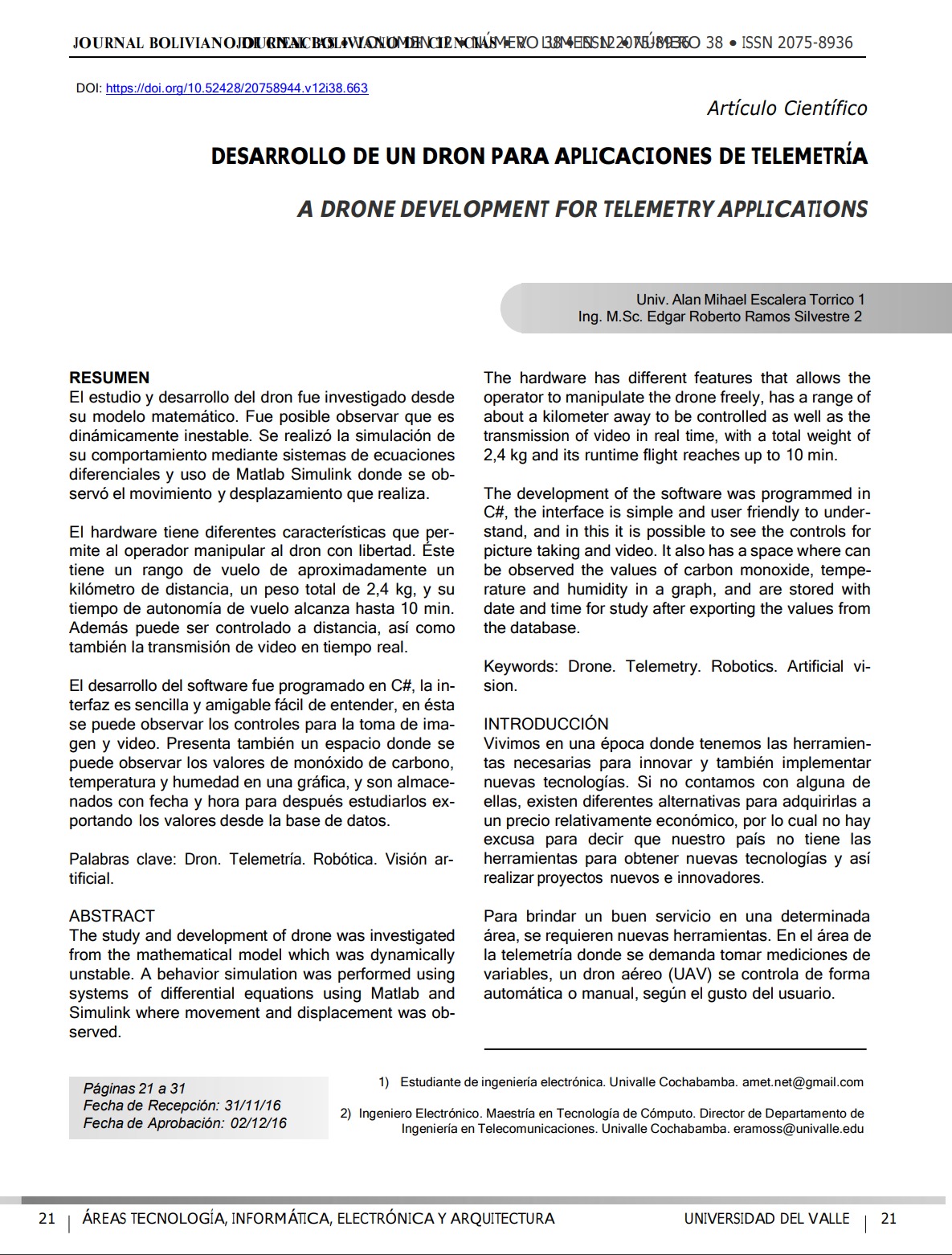A Drone Development for Telemetry Applications
DOI:
https://doi.org/10.52428/20758944.v12i38.663Keywords:
Drone, Telemetry, Robotics, Artificial visionAbstract
The study and development of drone was investigated from the mathematical model which was dynamically unstable. A behavior simulation was performed using systems of differential equations using Matlab and Simulink where movement and displacement was observed. The hardware has different features that allows the operator to manipulate the drone freely, has a range of about a kilometer away to be controlled as well as the transmission of video in real time, with a total weight of 2,4 kg and its runtime flight reaches up to 10 min. The development of the software was programmed in C#, the interface is simple and user friendly to understand, and in this it is possible to see the controls for picture taking and video. lt also has a space where can be observed the values of carbon monoxide, temperature and humidity in a graph, and are stored with date and time for study after exporting the values from the database.
Downloads
References
(1) FOGELBERG, J. (2013). Modelado del Sistema. En J. Fogelberg, Navigation and Autonomous (págs. 25-27). Sweden: Media-Tryck.
(2) RODRíGUEZ, P. D. (2014). Modelado. En P. D. Rodríguez, Verificacion y sistemas de control de vuelo para MAV-VTOL basadas en MATLAB Stateflow (págs. 36-37). Sevilla.
(3) MAGNUSSON, T. (2014). System Modelling. En T. Magnusson, Attitude Control of a Hexarotor (págs. 16-21 ). Linkopinq.

Downloads
Published
How to Cite
Issue
Section
License
Copyright (c) 2016 Alan Mihael Escalera Torrico y Edgar Roberto Ramos Silvestre

This work is licensed under a Creative Commons Attribution 4.0 International License.
Authors who publish with this journal agree to the following terms:
- Authors retain copyright and grant the journal right of first publication with the work simultaneously licensed under a Creative Commons Attribution License 4.0 that allows others to share the work with an acknowledgement of the work's authorship and initial publication in this journal.
- Authors are able to enter into separate, additional contractual arrangements for the non-exclusive distribution of the journal's published version of the work (e.g., post it to an institutional repository or publish it in a book), with an acknowledgement of its initial publication in this journal.
- Authors are permitted and encouraged to post their work online (e.g., in institutional repositories or on their website) prior to and during the submission process, as it can lead to productive exchanges, as well as earlier and greater citation of published work.














